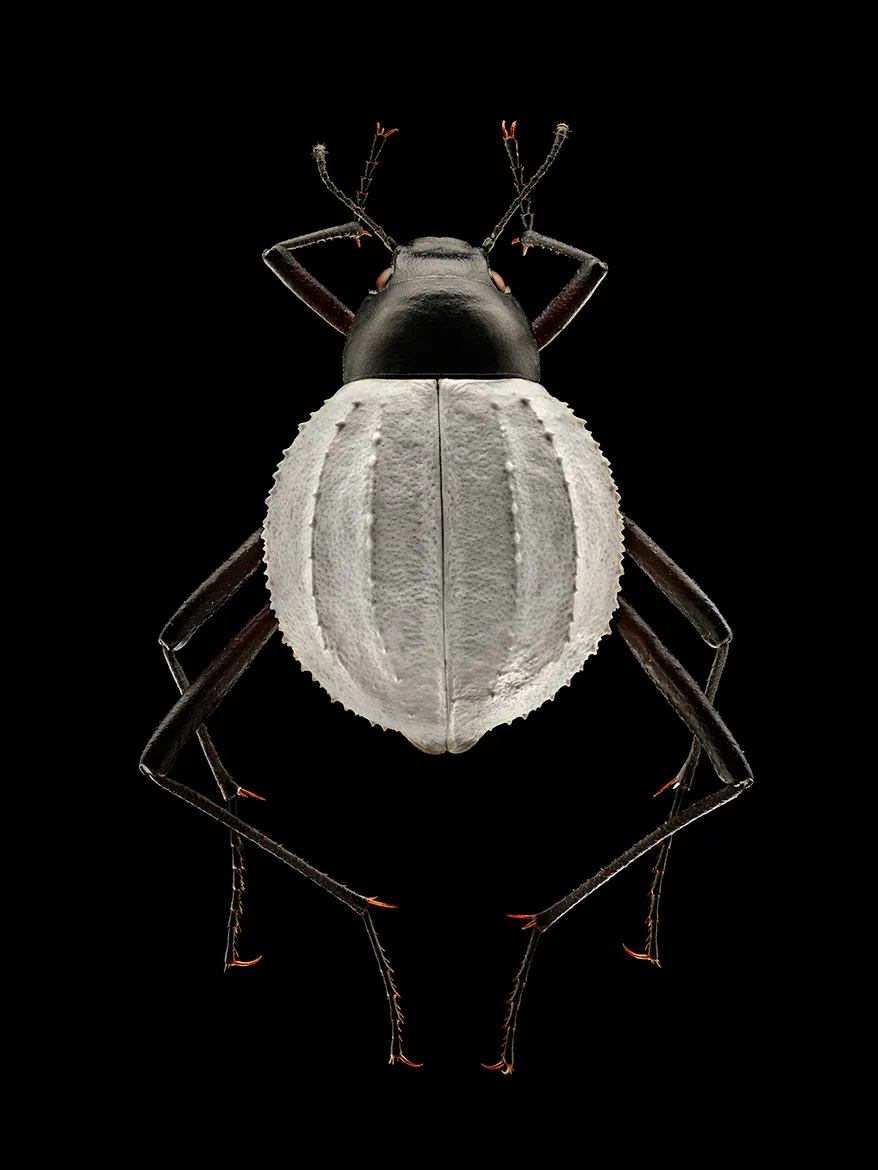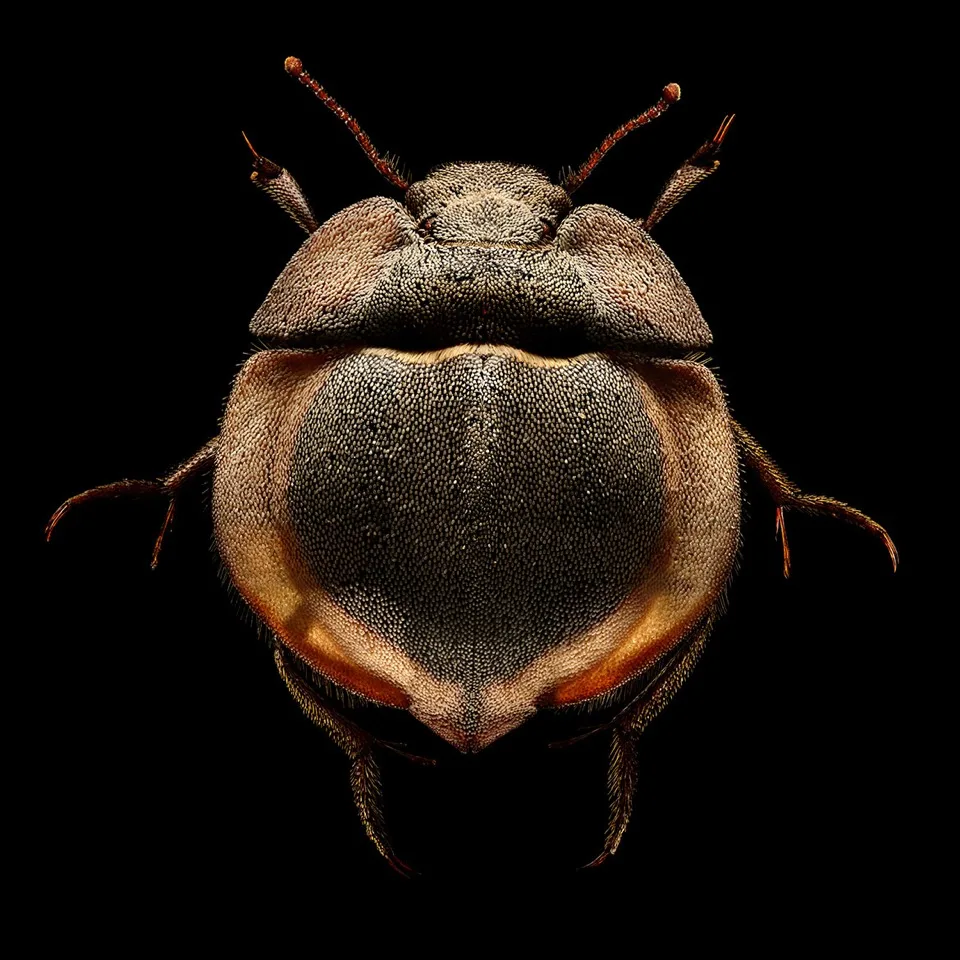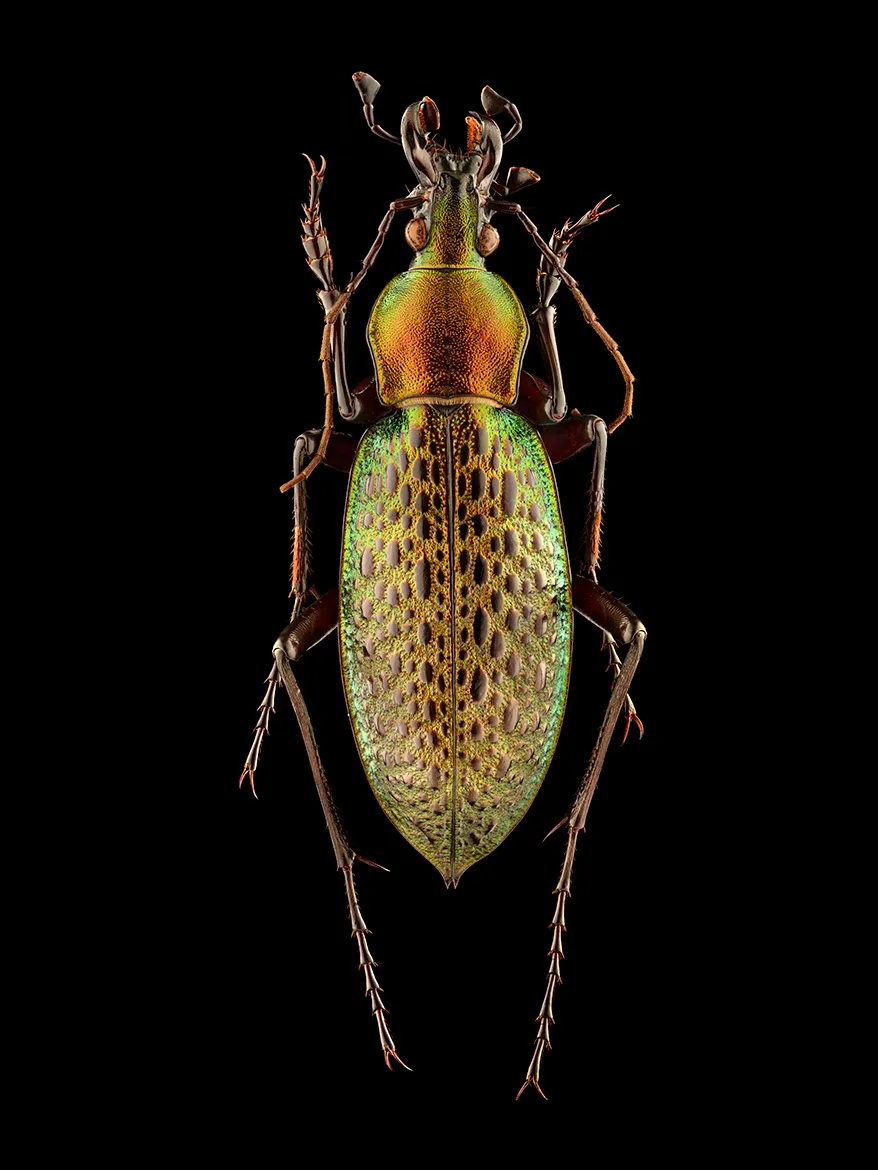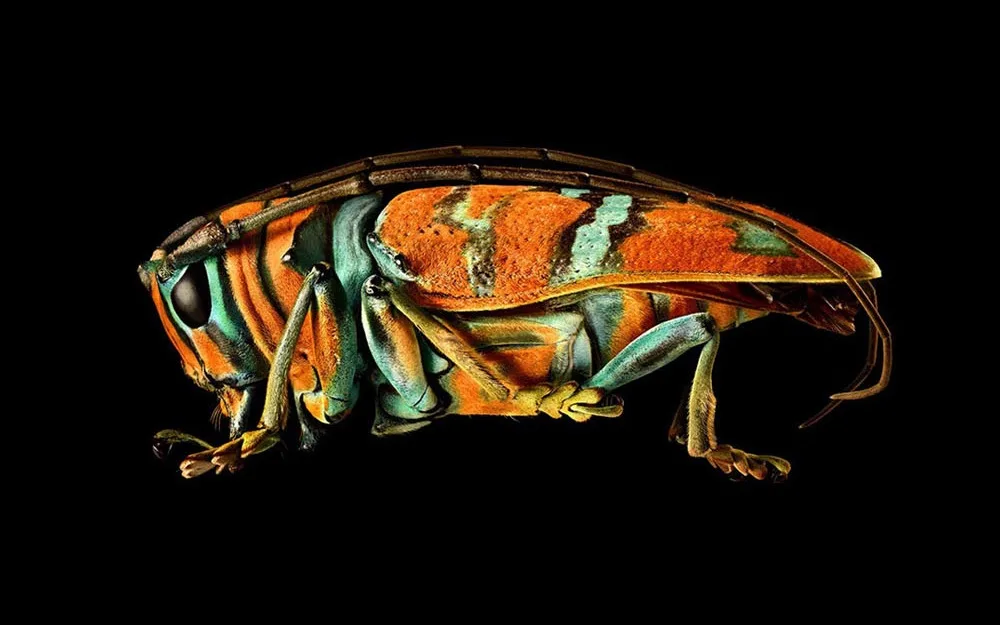
How do you go from being a commercial sports and portrait photographer to creating an immersive, up-close-and-all-too-personal study of insects? Three weeks ago, London-based image-maker Levon Biss released the gorgeously-detailed Microsculpture, an online exhibition of photographed insects ranging from beetles to grasshoppers.
In just a few days, the video released with the series got more than eight million views, and Levon is getting between 20 and 30 emails a day asking about his project.
Through Microsculpture, the spectator is immersed into the weird and wonderful world of insects. The beauty of the project is that not only do you get a sneak peek into this world, you are also able to zoom in, and zoom in, and zoom in, to reveal new details invisible to the naked eye.
“You don’t get to see insects like this ever, really,” Levon says. “They are around us all the time, but you don’t look at them, you are just aware that they’re there.”
So how did Levon get into this close relationship with insects? “As a commercial photographer you always need your own personal work which has no financial attachments to it. It’s important to keep you sane, and so I was looking for a project that was slightly different and technically challenging.”
The first insect he captured was one that his son found in their garden. They took it inside and studied it under a microscope, and Levon got so excited by what he was seeing he started taking photographs. One thing led to another, and soon Levon found himself in a meeting with Dr. James Hogan, an anthropologist at the Oxford University Museum of Natural History to discuss getting access to its enormous insect collection.

The time and devotion Levon has clearly put into the project is very impressive. “I’ve been working on this project by myself for almost two years. It’s a very solitary process – just me, in my studio, by myself, with the insects,” he says.
The exact amount of time spent with each insect depends on its size. “For example, an insect that is maybe 15 mm long, you would be looking at shooting something like 8,000 images. Then it would take about two to three weeks to create the final image. It takes about four days just to process all that information – each one of those 8,000 images is 100MB.”
Levon divides each of his subjects up into between 20 and 30 different sections and photographs each one separately. “So I might photograph an eye, and then I’ll light it in a way to make that one particular texture of the eye look as beautiful as it can,” Levon explains. “The way I like to think about it is just treat every single section like a small still-life.” Once he is happy with all the individual sections, he combines the layers into a minutely-detailed composite whole.

The painstaking process is in part a reaction against the way most of us take photographs now – quickly and unthinkingly snapping images on our phones.
With Microsculpture, Levon is deliberately going against this grain. “I wanted to find a new type of image that hasn’t been done before on this sort of scale – something that takes a lot of blood, sweat and tears to produce.
“I wanted these images to be big, at least three meters high. And on the website I wanted people to be able to zoom in, have an experience and take something away from the photographs.”
He has certainly achieved his goal with huge interest in the online site and his upcoming exhibition back at the Oxford University Museum of Natural History.
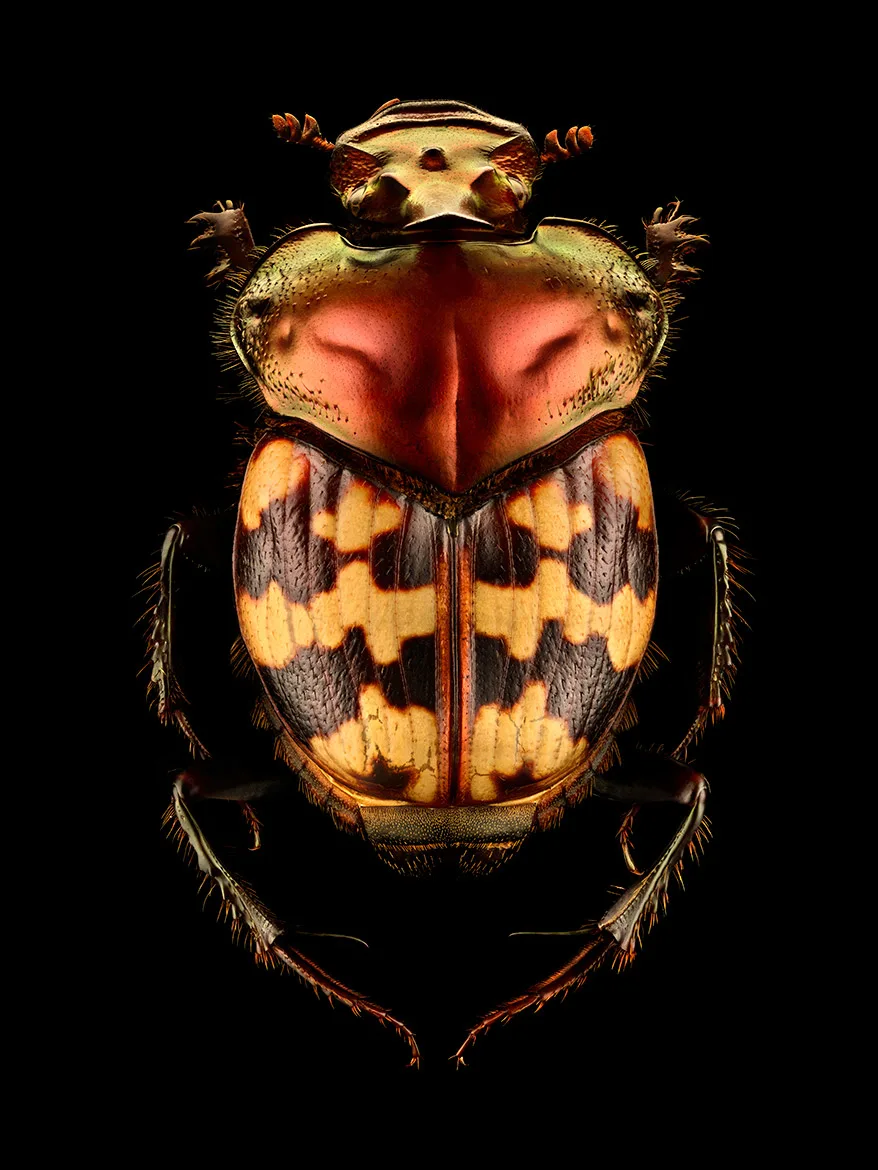
Levon is proud to have made something that excites people rather than creeps them out. “My wife and my daughter are crazy scared of spiders. If there were a spider in the house, they’d be screaming all over. Why are people scared of spiders? There’s no spider in the UK that could hurt you. It seems a bit hardwired into people that insects are creepy.
“I tried not to make them too scary, because that would be a cliché. When you are standing in front of a three-meter high insect, it shouldn’t incite a feeling of panic, it should be a feeling of wonder.”
Microsculpture will be on show at the Oxford University Museum of Natural History until October 30th. You can download some of Levon’s brilliant images using the button below.

